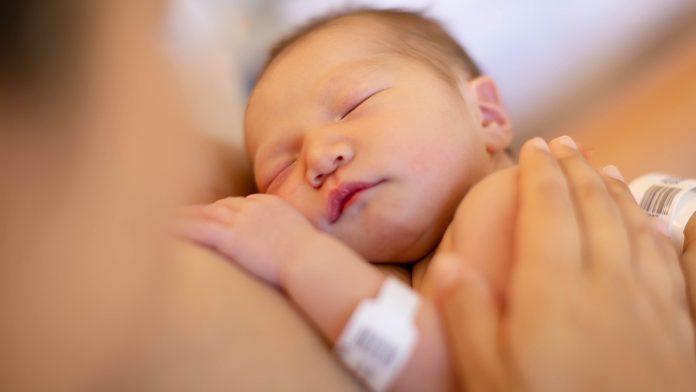
The World Health Organization (WHO) launched new guidelines about skin-to-skin contact to improve survival and health outcomes of preterm and small babies.
Skin-to-skin contact helps babies adjust to life outside the womb, supporting mothers with initiating breastfeeding and developing a relationship with their baby. Skin-to-skin contact is the practice of laying the baby directly on the mother’s bare chest after birth, covered by a blanket for around one hour.
The new guidelines advise that skin-to-skin contact with a caregiver, known as kangaroo mother care, should begin immediately after birth, without any initial period in an incubator. This change challenges earlier guidance and common clinical practice, highlighting the importance of skin-to-skin contact for preterm and small babies after birth.
“Preterm babies can survive, thrive, and change the world – but each baby must be given that chance,” said Dr Tedros Adhanom Ghebreyesus, WHO Director-General. “These guidelines show that improving outcomes for these tiny babies are not always about providing the most high-tech solutions, but rather ensuring access to essential healthcare that is centred around the needs of families.”
Preterm birth is a public health concern
Prematurity is a growing health concern. Figures indicate that around 15 million babies are born preterm, and over 20 million babies are born with low birth weights. These numbers are increasing, and prematurity has become the leading cause of death of children under five.
Depending on where they are born, there are significant risks that reduce a preterm baby’s chance of survival. Whilst most born at or after 28 weeks in high-income countries will survive, these numbers are not reflected in low-income countries with survival rates as low as 10%.
Skin-to-skin contact is important for survival
Most preterm babies can be saved through feasible, cost-effective measures including quality care during and after childbirth, prevention and management of common infections, and kangaroo mother care which combines skin-to-skin contact in a special sling or wrap for long periods and exclusive breastfeeding.
Previous recommendations advised an initial period of separation from their primary caregiver, with stabilising the baby in an incubator or warmer being prioritised. This process would take around three to seven days. The new advice from WHO outlines that skin-to-skin contact immediately after birth saves many more lives, reduces infections and hypothermia, and improves feeding.
“The first embrace with a parent is not only emotionally important but also absolutely critical for improving chances of survival and health outcomes for small and premature babies,” said Dr Karen Edmond, Medical Officer for Newborn Health at WHO. “Through COVID-19 times, we know that many women were unnecessarily separated from their babies, which could be catastrophic for the health of babies born early or small. These new guidelines stress the need to provide care for families and preterm babies together as a unit, and ensure parents get the best possible support through what is often a uniquely stressful and anxious time.”
These new recommendations can be easily adopted in low-income countries as they do not require high-tech equipment or a reliable electricity supply. They are also beneficial in high-income countries.
Furthermore, the guidelines strongly recommend breastfeeding to further improve health outcomes for preterm and low birth weight babies, with evidence showing it reduces infection risks compared to infant formula. Where mother’s milk is not available, donor human milk is the best alternative, though fortified ‘preterm formula’ may be used if there are no donor milk banks.










